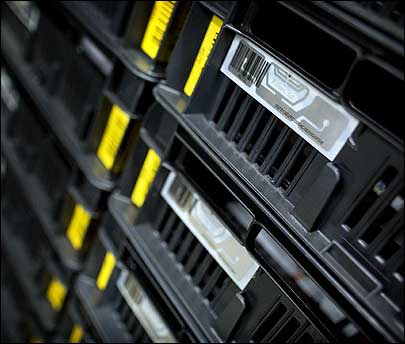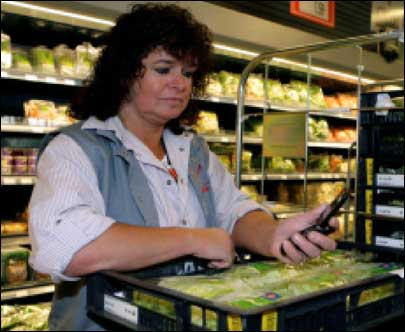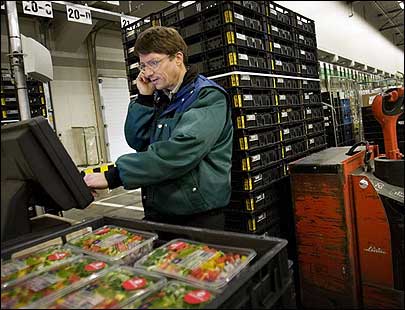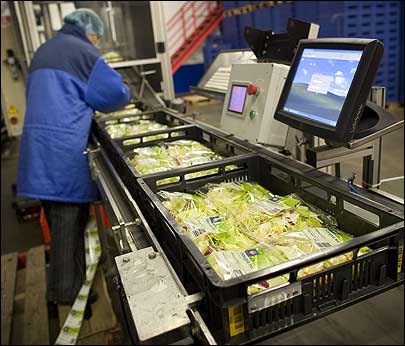Supermarket operator and wholesaler Schuitema reports that its two-year pilot tracking the fresh food supply chain in the Netherlands showed that the use of RFID can provide a range of benefits. However, the company says, the pilot participants—which include logistics and produce providers—have yet to decide when to launch further pilots or proceed to full deployment.
The mission of the pilot, known as Vers Schakel (Fresh Chain), was to study how RFID technology could help ensure the quality of fresh cut vegetables as they pass through the supply chain. The participants measured whether the use of RFID could improve shelf availability, decrease losses and errors and add a level of visibility to the supply chain, thereby increasing efficiency. The pilot, which ended in April of this year, proved RFID could offer improvements in all of these areas, according to Schuitema’s project leader, Erik Hess.
Dutch food-safety laws currently require a set of procedures involving visual and temperature checks as fresh produce is shipped from the field to retailers. Throughout the supply chain, producers, distributors and retailers are expected to check the appearance of fruits and vegetables, monitor the produce’s temperature and record the data manually, either on paper or keyed into a PC.
The methods presently used to fulfill the requirement, says Rene Bakker, Schuitema’s retail director and chairman of the Vers Schakel steering committee, involve numerous manual processes and can result in mistakes, such as product being misrouted or left outside of cold storage for too long. “People make mistakes and are not as efficient as automated processes,” he explains. For example, food-safety laws require that when fresh produce is in transit, records must be kept regarding its condition, temperature and time spent in the supply chain.
The RFID system devised for Vers Schakel could make such data collection more accurate through automation, and less prone to human error. With a manual system, , says Mark Flederus, RFID lead consultant at Capgemini Nederland and Vers Schakel project manager, there is no real-time relationship between the physical flow of goods and the informational record chronicling that flow. In other words, supply chain partners must wait for an employee to record, input and upload data to a database before they can access it. With such a delay, problems such as products being misdirected or left too long outside of cold storage might not be caught until goods are already damaged or lost.
For the pilot, NXP Semiconductors applied adhesive EPC Gen 2 UHF RFID tags (made with RFID inlays from several vendors, including UPM Raflatac) to 2,500 reusable plastic crates, provided by Centraal Bureau Levensmiddelenhandel (CBL), a Dutch supermarket trade group and crate supplier.
Produce distributor W. Heemskerk loaded the crates with packaged cut vegetables at its production facility. As the crates were loaded onto trucks, RFID portals at the facility’s dock doors read the crates’ tags. The portals, which featured RFID interrogators provided by Intellident, were tested and configured by RFIQ Solutions. The crates were then transported to one of Schuitema’s six distribution centers in Breda en Woerden. At that DC’s receiving dock, , Flederus says, a fixed RFID interrogator read the crate tags.
Schuitema delivers goods to 450 of its C1000 supermarkets throughout the Netherlands. One of those stores—C1000 Supermarket Mario de Veij, in Bergen op Zoom—participated in the pilot. When the C1000 store placed an order for vegetables, the interrogator at the DC’s dock doors read the tags once more as the crates were loaded on trucks. After the shipment arrived at the C1000 store, the tags were interrogated at that site’s dock doors before being moved into cold storage. They were then read again as they were removed from cold storage and taken to the sales floor. Ultimately, the empty crates were returned to the Schuitema distribution center, where they were read at receiving and loading, and finally as they were received by Heemskerk for reuse. Container Centralen provided the reusable crate pool management.
Whenever the tags were scanned, KPN‘s CyberCenter software system translated data from the readers to business information. According to Hess, the system used EPC Information Service (EPCIS) and EPC Discovery Service applications to make the data available via a Web site to all pilot participants, including the shipper, distributor and retailer.
Temperature loggers, designed by Wageningen University and Research Center (WUR), were placed in several of the crates during four separate shipments. Every five minutes, the loggers saved the temperature reading. The loggers were read manually at the end of each cycle, and in the event of a bad temperature read, the incident could then be traced back by time and location with the RFID supply chain data to discover where the problem occurred. Data from the loggers was also downloaded with RFID data into the EPCIS system. “As expected, we didn’t detect any bad temperatures at Heemskerk and the DC,” Hess says, adding that no instances of inappropriate temperatures were recorded at the store.
An alarm application working in conjunction with the RFID system was in place to alert workers to instances when a crate loaded with produce was out of cold storage for more then 15 minutes. In such a scenario, the system would have been able to send a voice message or e-mail to supply chain members. Two alarm zones were implemented: one between the moment product was received at C1000’s back door and the time it entered cold storage, and another between leaving cold storage and being reported empty or returned into cold storage.
“The use of RFID technology enables the sharing of information between different partners in the supply chain,” Bakker states. “This leads to transparency and, ultimately, to a product of better quality.” He says he sees benefits in more accurate anticipation of stock at distributors and stores, a reduced product loss of 10 percent, additional sales due to improved shelf stocking, higher-quality product because of reduced delays in the supply chain, and reduced cost related to delivery errors.
With all these benefits in mind, Bakker says he estimates a return on investment at 2.7 years, provided all supply chain partners participate. Schuitema has yet to decide when full deployment will proceed, he says, adding that to be successful, “all chain participants must share enthusiasm for RFID—suppliers and retailers.”
With the pilot completed, crates are no longer being tagged. For future deployment, tags may be molded into the crates by the crate manufacturers to reduce the labor and expense of tagging crates.





